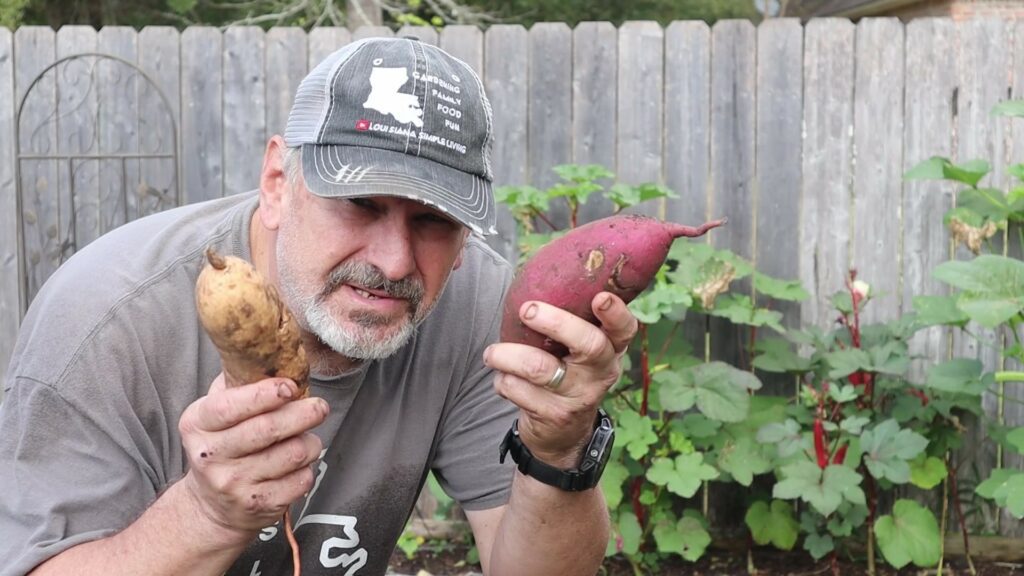
Let me show you how simple it is to grow sweet potatoes, by planting slips and then harvesting them. I’m going to put a spotlight on 2 varieties that I grew this summer, Vardaman and the Murasaki. I planted 6 Vardaman slips and 5 Murasaki slips back in late Spring.
| Sweet potatoes really are easy to grow and everybody loves sweet potatoes! |
There are some distinct differences when growing a sweet potato versus a regular potato. With a regular potato, you typically create a trench and as the plants grow, you mound up around the plant. Now, sweet potatoes will grow down. So, when you plant your slip at the surface, the roots grow down and have the actual potato grow down as well.
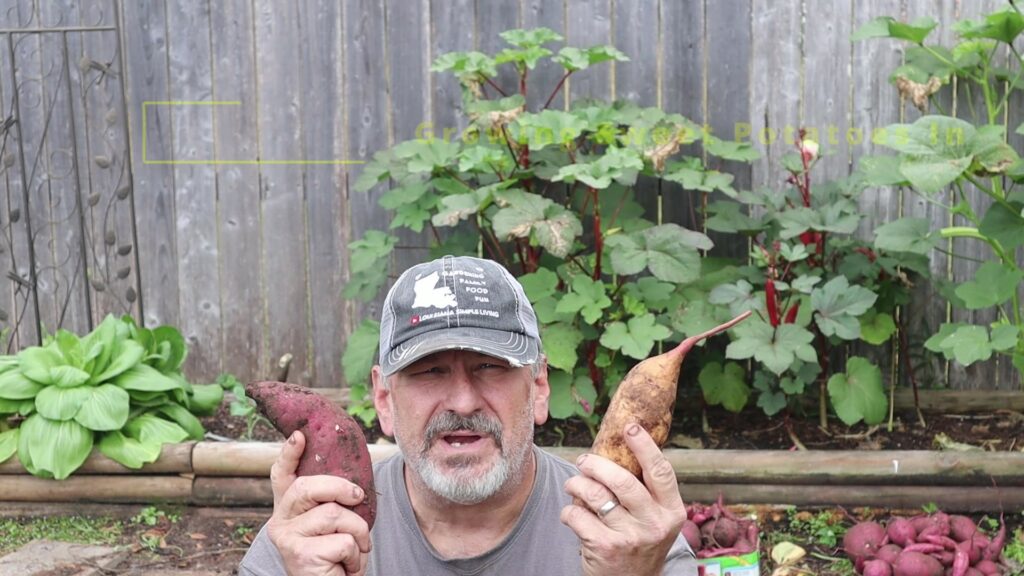
One item to expect with Sweet Potatoes is that the vines will grow well beyond the bed that you planted them in. I had vines and more vines to clear out before you can even see the dirt in your raised bed.
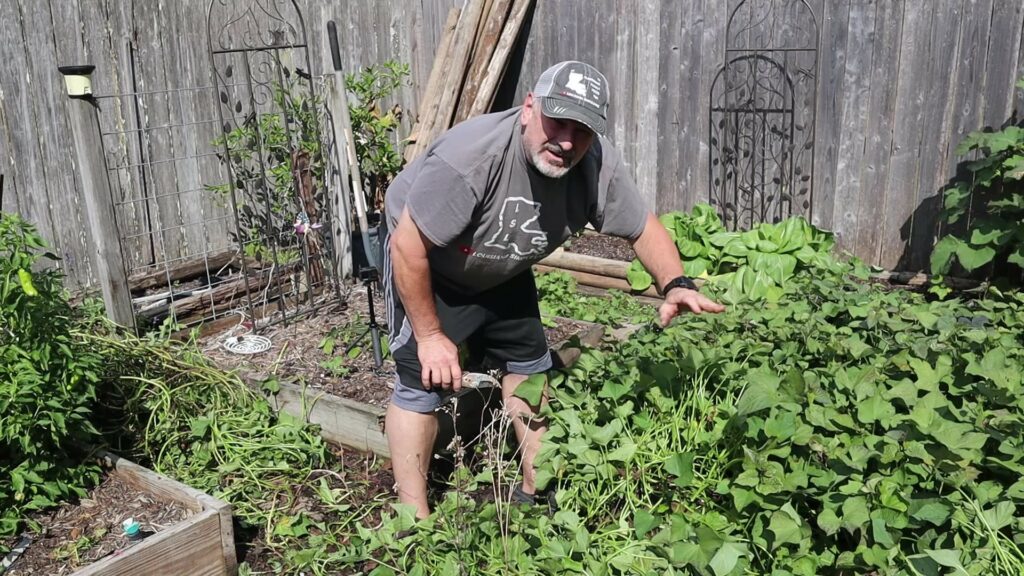
Sweet Potato, Murasaki
| Murasaki sweet potatoes are characterized by their deep purple skin and creamy white flesh, as well as their extra starchy texture. They are sometimes labeled as “Japanese sweet potatoes,” Murasaki sweet potatoes were actually developed in Louisiana. The name Murasaki means “purple” in Japanese, as the potato is similar in look and taste to many Asian types. The variety, invented in 2001 and patented by the Louisiana Experiment Station, was released to growers in 2008. The common orange-fleshed sweet potato found in American grocery stores (usually Beauregards or Jewels) and Murasaki sweet potatoes are different. Murasaki sweet potatoes tend to be drier, with a flesh that more resembles a regular potato than a sweet potato when cooked. This new sweet potato variety demonstrates superior disease resistance to southern root-knot nematodes. This new variety also demonstrates a resistance to soil rot and fusarium root rot, similar to ‘Beauregard’. I cooked a Murasaki potato, wrapped in aluminum foil, the other night on my grill while cooking some chicken and sausages. It turned out to be absolutely delicious!!! |
This Murasaki Sweet Potato looks like a pear, although a purple one!
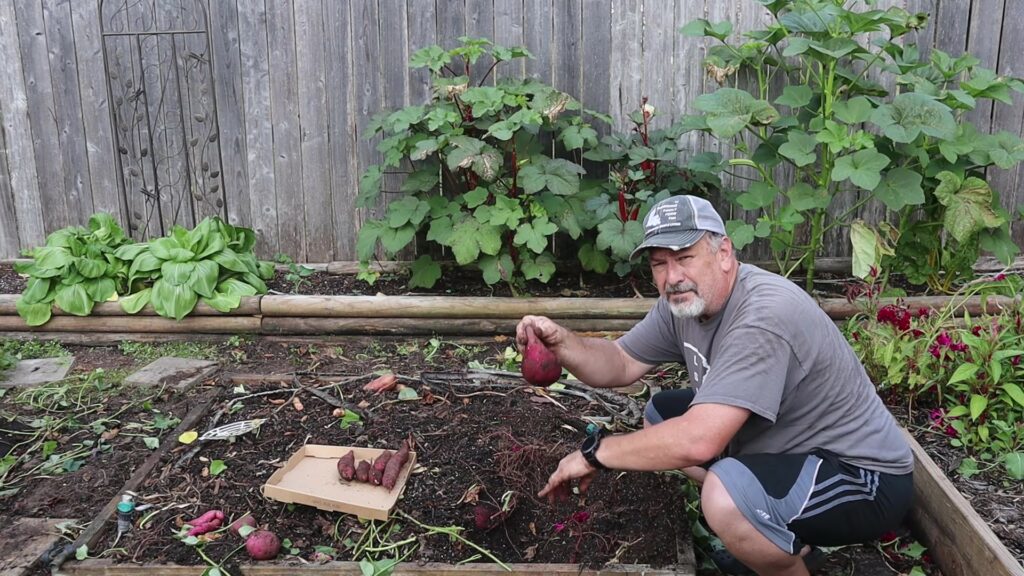
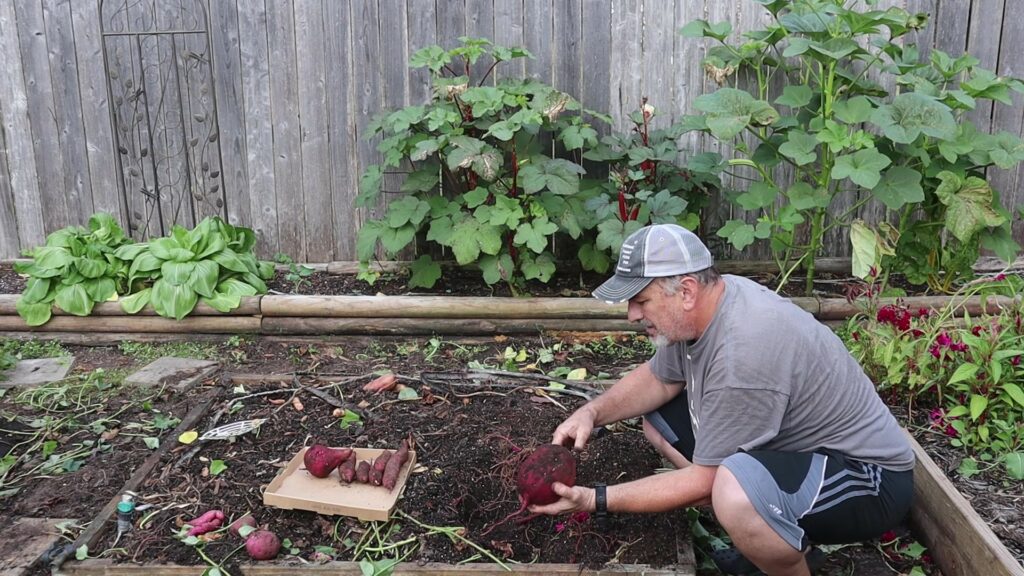
This Murasaki Sweet Potato look like a turkey or chicken. You can see its drumsticks on the left and the wings on the right. LOL!!
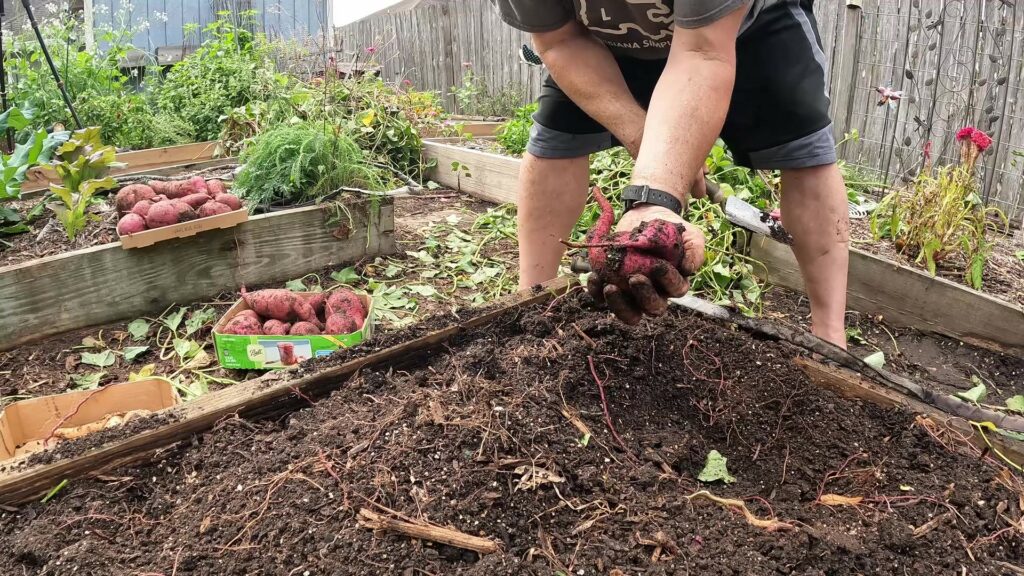
Sweet Potato, Vardaman
The Vardaman Sweet Potato is a bush-type variety with golden-yellow skin that darkens after digging. The flesh is one of the deepest, brightest, red-orange colors that you will see in a sweet potato. This variety is named after the famous sweet potato growing town in Mississippi from which, some say, come the world’s finest sweet potatoes. There is a Vardaman Sweet Potato Festival in Vardaman, MS in November each year. I cooked a Vardaman Sweet Potato, wrapped in aluminum foil, the other night along with the Murasaki, on my grill while cooking some chicken and sausages. It also was absolutely delicious!!!
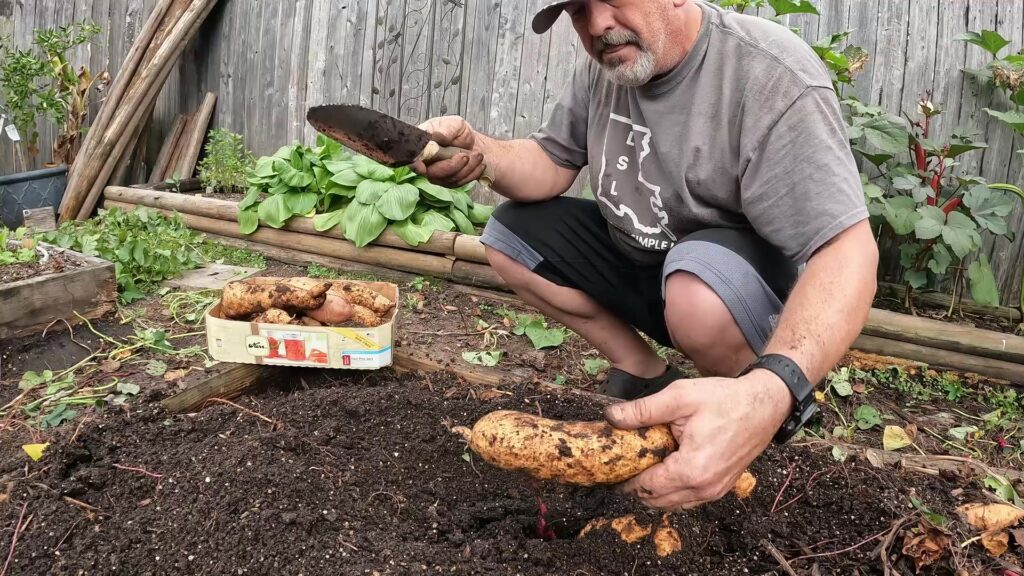
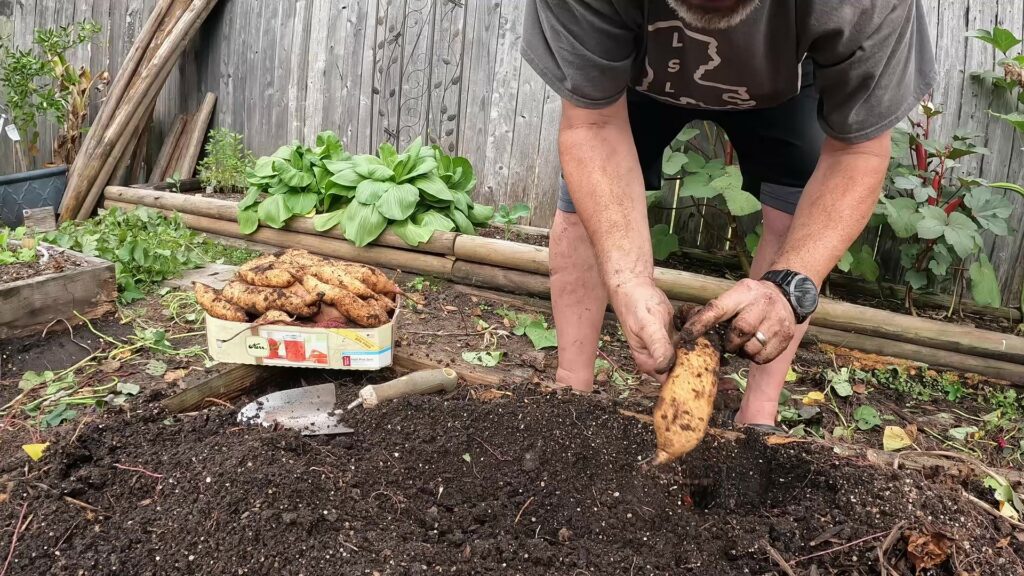
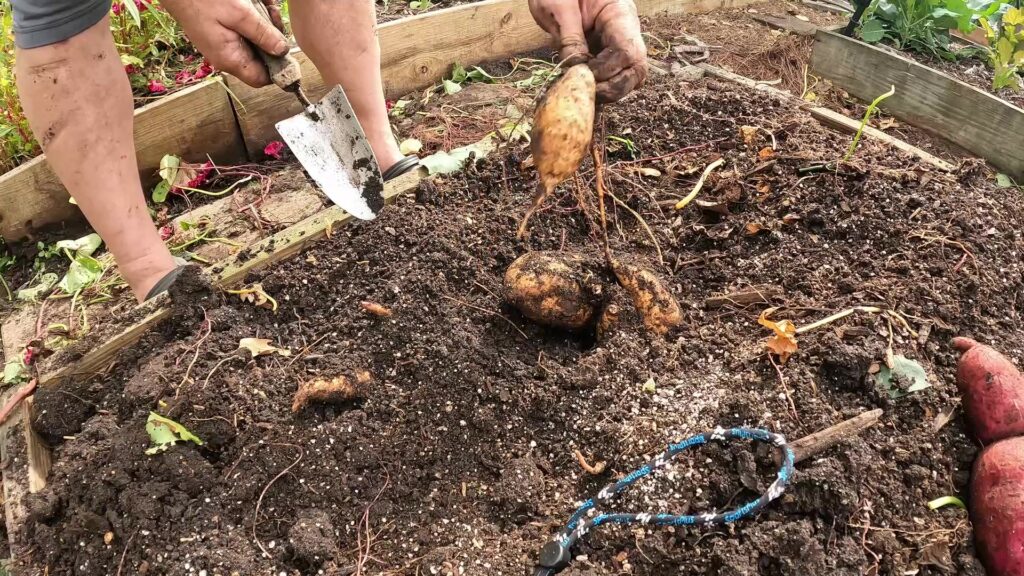
Curing Sweet Potatoes
After they are harvested, sweet potatoes should be cured and forget washing them before curing. Curing promotes the healing of cuts and bruises that occur during harvesting and handling. It also protects the roots from storage diseases and excessive shrinkage while starches are being converted to sugars and other flavor components. Curing the roots increases the post-harvest life of the sweet potato.
To cure roots, hold them at 85 degrees F with 90 to 95 percent relative humidity (RH) for 4 to 7 days. Then store them in a dry dark location where they will last for 4 to 7 months.
Overall Harvest
As you can tell, I had quite a harvest considering all of the slips were planted in a 4 x 5 raised bed garden. It was easily over 50 pounds of sweet potatoes.
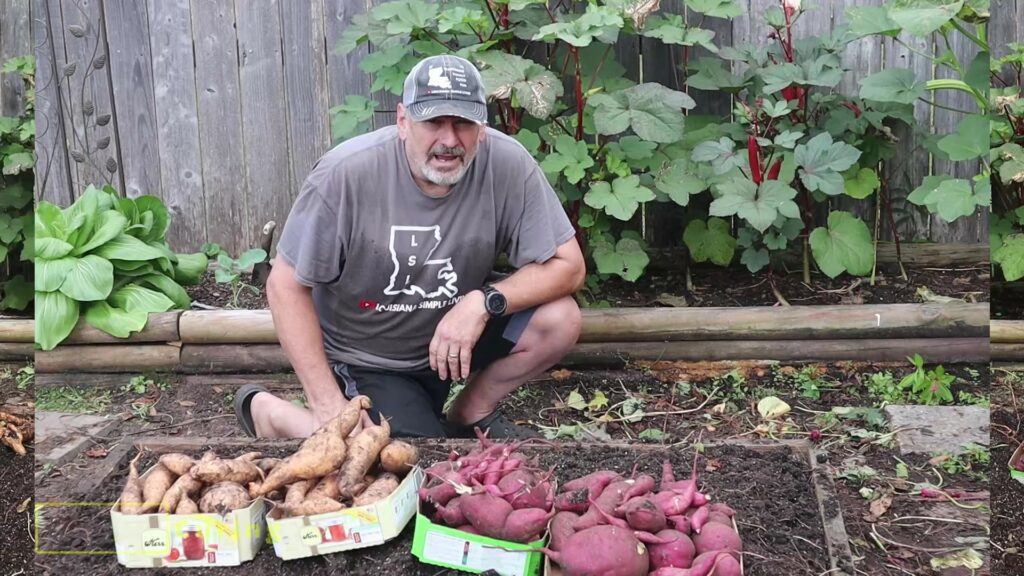
Check out this video as it describes how to plant sweet potato slips:
This video shows the incredible harvest I had from planting the sweet potato slips in a 4 x 5 raised bed.
The ultimate reason for this post and the YouTube videos is to let you know how you too can grow sweet potatoes and much more in your own small raised bed garden. Sweet potatoes are truly easy to grow as I never did anything other than make sure my soil was loaded with compost, along with being loose and friable due to my soil incredible soil mix. Take a look at my “Feed the Soil, and Not the Plant, video at:
The sweet potatoes, and all my plants, love this soil and the organic nutrients it provides to grow organic, healthy and fresh produce for my family to enjoy. You too can grow sweet potatoes in your own backyard. Check out the sweet potato videos above and all my content around my backyard organic raised bed garden and how you can be successful in your own garden!!
If you like this post, check out the Growing Okra Guide.

Leave a Reply